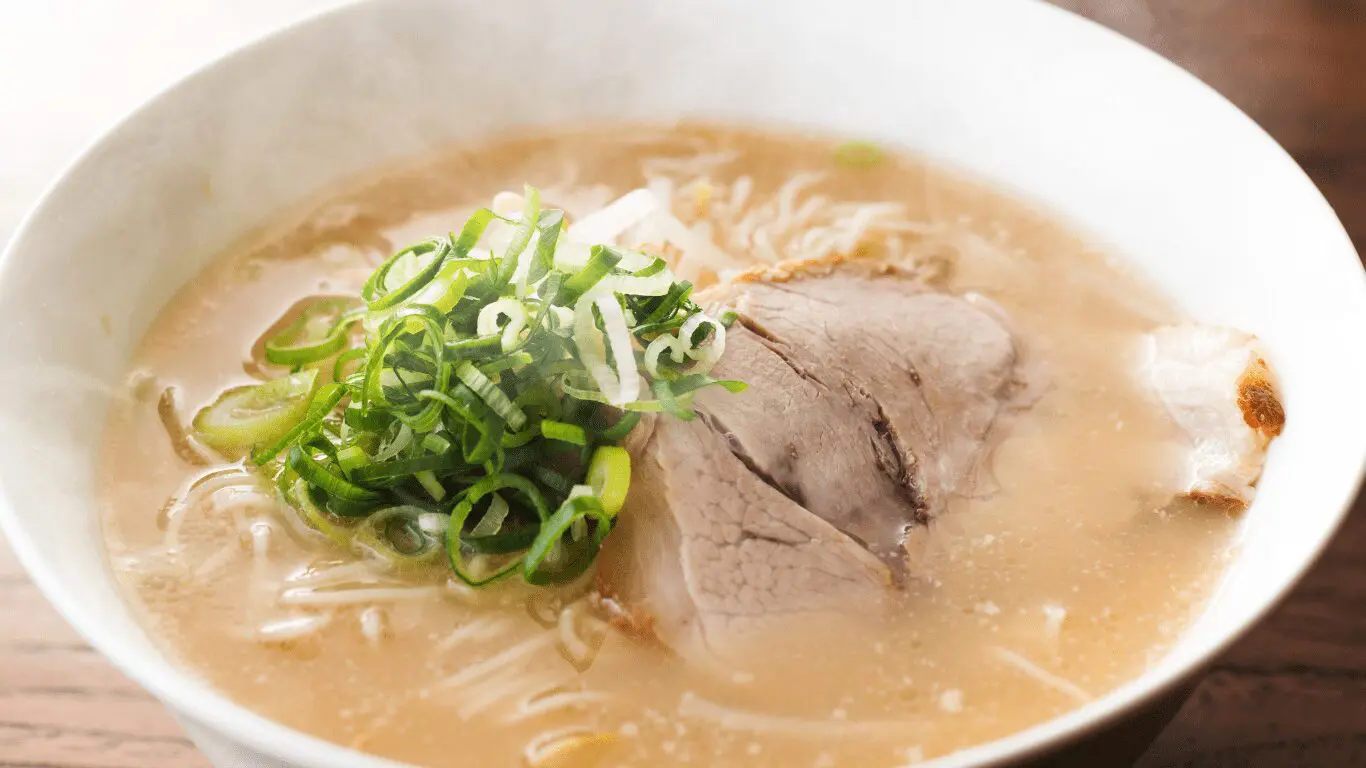Discover the Key Differences! A Deep Dive into Running a Ramen Restaurant in Japan vs. the U.S.
Published: Mar 5, 2025/ Last Updated:Mar 5, 2025
- 13 min read

Hello, ramen lovers across the country!
Our blog usually focuses on all things ramen, but today, we’re shifting gears to provide valuable insights into what it takes to open a ramen restaurant – perfect for anyone curious about the process.
Ramen, a beloved part of Japanese food culture, has gained worldwide popularity, with its demand in the U.S. skyrocketing in recent years. However, running a ramen shop in Japan and the U.S. comes with significant differences. Consumer preferences, dining habits, and business practices differ between the two countries, so a ramen shop that succeeds in Japan may not find the same success in the U.S. without adjustments. Understanding these cultural and market differences—and tailoring your approach accordingly—is the key to success.
In this article, we’ll break down the key differences between Japan and the U.S. when it comes to operating a ramen restaurant and provide strategies for navigating these challenges. We’ll also outline the essential steps for launching a ramen shop in the U.S., guiding you in creating a solid business plan.
Let’s dive in!
- Index
- How does the Ramen Business Differ by Country? A Comparison of Restaurant Operations in Japan and the U.S.!
- Steps to Opening a Ramen Restaurant in the U.S.
- Conclusion
■How does the Ramen Business Differ by Country? A Comparison of Restaurant Operations in Japan and the U.S.!

In this section, we’ll take a deep dive into the key differences between running a ramen restaurant in Japan versus the U.S.—essential insights for anyone looking to succeed in the American market. By understanding local culture and consumer preferences, you can create a ramen shop that truly resonates with your audience. Let’s explore what it takes to build a thriving ramen business in the U.S.!
1. Turnover Rate vs. Dining Experience
One of the biggest cultural differences between ramen restaurants in Japan and the U.S. is the emphasis on efficiency versus the overall dining experience.
In Japan, ramen is considered a quick meal, and restaurants prioritize high turnover rates—serving as many customers as possible in a short time. Speed and efficiency are key.
In contrast, dining in the U.S. is often seen as a social or leisurely activity. Customers value not just the food itself but also the atmosphere and service. As a result, ramen shops in the U.S. place a greater emphasis on crafting an enjoyable dining experience, with stylish, Instagram-worthy interiors and exceptional service playing key roles in drawing customers in.
2. Catering to Dietary Restrictions
The demand for gluten-free, vegan, and other dietary options in the U.S. stems from cultural differences and evolving consumer preferences.
In America, growing awareness of health, food allergies, environmental sustainability, and animal welfare has made diverse menu options essential. Offering gluten-free and vegan ramen not only enhances customer satisfaction and safety but also helps attract a broader audience.
In contrast, traditional ramen styles dominate in Japan, and accommodations for dietary restrictions remain relatively limited. However, in the U.S., having inclusive menu options can be a competitive advantage. Health-conscious dishes often gain traction on social media and review platforms, driving more customers to a restaurant.
Flexibility in meeting diverse dietary needs is a key factor in the success of ramen shops in the U.S. market.
3. Payment Methods
In Japan, ticket vending machines are commonly used in ramen shops to streamline the ordering process. Customers select their menu items and pay upfront, receiving a ticket to hand to the kitchen staff. This system reduces wait times, minimizes errors, and lightens the staff’s workload. As a result, more restaurants are adopting ticket vending machines to improve efficiency and increase turnover rates.
In contrast, the U.S. places greater emphasis on the dining experience, where personal interaction and order customization are key. Many American customers value communication with staff and may find vending machines unfamiliar or impersonal.
Additionally, tipping culture plays a significant role in the U.S., where customer service is a major factor in dining satisfaction. As a result, self-service ticket machines may not necessarily enhance convenience or align with customer expectations, highlighting a key cultural difference in restaurant operations.
4. Expanding the Menu
Ramen restaurants in the U.S. are expected to offer a wider variety of options than those in Japan, largely due to cultural diversity and consumer preferences.
As mentioned in the section on dietary restrictions, there is a growing demand for health-conscious and alternative menu items, such as gluten-free and vegan ramen. Expanding menu options not only increases customer satisfaction but also attracts a broader audience.
Additionally, the U.S. is a culturally diverse country where customization is highly valued. Offering flexible options that cater to individual tastes can enhance a restaurant’s appeal.
In a competitive market, creativity is also key. Unique toppings, fusion-style ramen, and inventive flavor combinations are popular and can help a restaurant stand out. Providing a diverse and adaptable menu is essential for success in the U.S. ramen industry.
5. Choosing the Right Location
The ideal location for a ramen shop differs between Japan and the U.S., reflecting cultural and business priorities.
In Japan, high turnover rates are a priority, so ramen restaurants are often located in busy commercial areas, such as business districts or shopping streets, where they can efficiently serve many customers. Since ramen in Japan is typically a quick meal, choosing a location that supports fast service is crucial.
In contrast, in the U.S., dining is often seen as an experience, and customers tend to prefer restaurants with spacious, comfortable interiors. Locations that offer a welcoming atmosphere, such as trendy neighborhoods or areas with high foot traffic, are more appealing. Additionally, spots that are visually appealing and "Instagram-worthy" can attract younger customers and tourists.
Overall, while Japan prioritizes efficiency in location selection, the U.S. focuses more on enhancing the dining experience.
6. Differences in Post-Drinking Ramen Culture
In Japan, eating ramen after drinking is a well-loved tradition. Often referred to as "shime no ippai" (the final bowl), ramen is considered a satisfying and comforting way to end a night out. Many ramen shops in nightlife districts stay open late, making it easy for people to stop by after drinking.
In contrast, the U.S. does not have as strong of a culture around post-drinking meals. While late-night food options exist, it’s more common for Americans to have a full meal while drinking rather than seeking out a specific dish afterward. Since ramen is still a relatively new addition to mainstream American food culture, the idea of having it as a go-to post-drinking meal has yet to gain widespread popularity.
7. Legal Regulations
The legal requirements for opening a ramen restaurant differ significantly between Japan and the U.S.
In Japan, obtaining a business license requires meeting health and safety standards set by the local health department. However, these regulations are generally uniform across the country.
In contrast, the U.S. has state-specific regulations, making the process more complex. Food safety standards, business permits, and operational requirements vary by state, and restaurants must comply with strict local guidelines. Additionally, regulations on alcohol service and allergen labeling can be highly detailed.
Tax laws and labor regulations also differ. In the U.S., factors like state-specific minimum wages and varying tax rates can significantly impact business operations.
Because of these complexities, understanding the specific legal and regulatory landscape of your chosen location is crucial before opening a ramen shop in the U.S.
■Steps to Opening a Ramen Restaurant in the U.S.

So far, we’ve explored the key differences between running a ramen shop in Japan and the U.S., but what does it actually take to open a ramen restaurant in America?
The U.S. restaurant industry is highly competitive, and with the recent ramen boom, more businesses are entering the market. To succeed, thorough research and a well-planned strategy are essential. Additionally, adapting to different legal regulations and market conditions is crucial. Without proper preparation, new businesses may struggle before gaining traction.
To help aspiring ramen shop owners, we’ve outlined the key steps to opening a ramen restaurant in the U.S. Understanding this process will set you on the path to success.
Bringing authentic ramen to American customers is an exciting challenge. By preparing carefully and taking each step strategically, you can build a ramen shop that thrives in the U.S. market. Let’s get started!
1. Market Research
Thorough market research is essential for running a successful ramen business. Understanding your target customers, competitors, consumer preferences, location factors, and market trends will help you develop an effective strategy.
For example, catering to younger demographics or offering vegan menu options can align your products and pricing with customer demand. Analyzing competitors can also help you identify key differentiators and offer unique services that enhance your competitive edge.
Location selection is another critical factor. Opening near business districts, universities, or shopping centers can significantly improve foot traffic and increase your chances of success. Additionally, understanding price sensitivity will help you balance customer satisfaction with profitability.
Skipping this research can lead to long-term business challenges. Investing time and resources in a comprehensive market analysis is a key step toward building a thriving ramen restaurant in the U.S.
2. Creating a Business Plan
A business plan serves as the blueprint for a successful ramen restaurant. Clearly defining your vision and goals helps establish consistency and direction in your operations.
A well-structured business plan is also crucial for securing funding. Detailed financial projections, including revenue forecasts and cost analysis, can build credibility with investors and banks, making it easier to obtain capital.
Additionally, conducting market research and competitive analysis allows you to develop strategies that leverage your strengths and differentiate your business. Your operational plan should outline key elements such as menu development, staffing, and workflow management, ensuring smooth day-to-day operations and efficient resource allocation.
Incorporating contingency plans and risk management strategies will also prepare you to adapt to market shifts and unforeseen challenges. Ultimately, a solid business plan not only sets clear success metrics but also provides a framework for tracking progress and making improvements, helping your ramen shop thrive in the competitive U.S. market.
3. Menu Development
Your menu is a key reflection of your ramen shop’s brand and concept. Crafting unique flavors, toppings, and broth varieties helps differentiate your restaurant and attract repeat customers. Offering options like vegan and gluten-free ramen can also broaden your appeal, catering to the diverse dietary preferences of the U.S. market.
Balancing ingredient costs with pricing is essential for maintaining profitability. Streamlining your menu selection can improve kitchen efficiency, reduce prep time, and speed up service, ultimately enhancing the overall dining experience and increasing table turnover.
Incorporating seasonal specials and trending flavors can keep your offerings fresh and engaging, helping your restaurant stay competitive. Since menu development directly impacts differentiation, profitability, operational efficiency, and customer satisfaction, a well-thought-out strategy is essential for long-term success.
4. Financial Planning
A well-structured funding plan is essential for securing capital and establishing a strong financial foundation for your ramen shop. Opening a restaurant requires significant upfront investment, including rent, interior renovations, kitchen equipment, and inventory. By creating a financial plan, you can estimate these costs and determine how to secure the necessary funds.
Since revenue may be unstable in the early months, it’s also crucial to plan for operating expenses such as employee salaries, utilities, and supply costs. A solid funding strategy helps manage cash flow effectively and guides you in choosing the best financing options, whether through bank loans, investors, or crowdfunding.
Understanding the advantages and risks of each funding method is key, and a well-prepared plan should include detailed financial projections and growth strategies to gain the trust of lenders and investors. It’s also important to incorporate contingency and emergency funds to handle unexpected challenges.
Additionally, outlining a long-term vision—such as future store expansions or menu innovations—demonstrates sustainable growth potential, helping to build confidence among potential investors.
Ultimately, a strong funding plan plays a critical role in securing capital, managing finances, and minimizing business risks, setting the foundation for long-term success.
5. Selecting the Ideal Location
The success of a ramen restaurant in the U.S. largely depends on choosing the right location. Your choice should align with the target customer base defined in your business plan. For example, casual ramen spots may thrive in areas with a younger demographic, while business districts offer strong lunchtime demand. In tourist-heavy locations, incorporating local ingredients into your menu can attract visitors looking for a unique dining experience.
It’s also important to analyze the competition. In highly competitive areas, differentiation through menu offerings and branding is key. On the other hand, locations with fewer ramen shops present an opportunity to tap into an underserved market, though demand may be less predictable.
Accessibility and visibility are also major considerations. Choosing a well-trafficked, easy-to-reach location can significantly boost customer flow.
Rent prices can vary significantly depending on the location. While high-rent locations may offer better foot traffic, careful analysis is needed to ensure profitability. Conversely, lower-rent areas can be viable if they attract the right customer base. Additionally, adapting your menu to local tastes can enhance customer appeal, increasing your chances of success.
6. Obtaining the Necessary Licenses and Certifications
Securing the proper licenses and certifications is essential when opening a ramen restaurant in the U.S. Without them, operating legally is impossible. Required permits typically include a business license, health department approval, and food handling certifications.
Restaurants must comply with strict health and safety regulations, and having certified staff demonstrates proper sanitation practices. Failing to meet these standards can result in fines or legal penalties, making certification an important aspect of risk management.
Additionally, some certifications are required to obtain business insurance, which helps protect against accidents and unforeseen issues. Being properly certified also enhances credibility with customers and business partners. In the U.S., food industry certifications can strengthen your brand’s reputation and provide a competitive advantage.
Since regulations vary by state and city, it’s crucial to research and obtain the necessary certifications specific to your location.
7. Building Strong Supplier Partnerships
Establishing strong partnerships with reliable suppliers is essential when opening a ramen restaurant in the U.S. To maintain the high quality of key ingredients—such as noodles, broth, seasonings, and toppings—you need a dependable supply chain that ensures consistency and freshness.
For restaurants planning to make fresh noodles in-house, investing in noodle-making equipment and developing the necessary expertise is crucial for maintaining quality. However, if in-house production is not feasible, partnering with a trusted noodle manufacturer is a great alternative.
Myojo USA offers a wide selection of fresh noodles for restaurant businesses. If you’re interested in exploring our products, feel free to reach out for more details.

8. Interior Design
Interior design plays a crucial role in shaping a ramen restaurant’s atmosphere and brand identity. A well-designed, comfortable space enhances the dining experience and encourages customers to return. Additionally, an Instagram-worthy aesthetic can be a powerful marketing tool, attracting new guests through social media.
A restaurant’s interior should reflect its concept and theme, helping to differentiate it from competitors. Whether it’s a traditional Japanese ramen shop or a sleek modern space, aligning the design with your target audience is key. Carefully planned layouts also improve staff efficiency and customer flow, leading to better service and a more enjoyable dining experience. An open-kitchen setup can further engage customers by showcasing the art of ramen preparation.
In the highly competitive U.S. market, eye-catching interiors can drive foot traffic by drawing attention from passersby. A unique and memorable design not only enhances brand value but also increases customer satisfaction, making it a critical element of a successful ramen business.
9. Hiring and Training Staff
Well-trained staff delivering high-quality service directly impacts customer satisfaction and helps build a loyal customer base. Friendly, efficient service and knowledgeable staff can enhance the overall dining experience, making customers more likely to return. Proper training also improves kitchen and floor operations, reducing order errors and accelerating service.
In addition, compliance with the U.S.’s strict food safety regulations requires rigorous hygiene training and proper certifications. Ensuring that staff are well-versed in sanitation protocols helps prevent potential issues and keeps the restaurant in compliance with health standards.
Investing in staff training also fosters professional growth, boosting motivation and reducing turnover rates. A well-trained, stable team is essential for maintaining consistent service quality and ensuring smooth day-to-day operations.
10. Grand Opening Marketing
If you’re opening a new ramen shop, your top priority should be getting noticed in the community. Effective marketing following your restaurant’s debut is essential for building brand awareness and attracting potential customers. To sustain the buzz around your launch, consider running promotions or special offers to encourage repeat visits. Loyalty programs and social media engagement can also help turn first-time visitors into regular customers.
The U.S. restaurant industry is highly competitive, with new trends constantly emerging. To stand out and stay relevant, continuous marketing efforts are necessary. Additionally, American consumers rely heavily on review platforms like Yelp and Google Reviews when choosing where to eat. Encouraging positive customer feedback can significantly impact your restaurant’s visibility and reputation. Sharing high-quality photos and videos on social media is another powerful way to enhance your online presence.
Seasonal menus and special events can also help maintain customer interest over time. A well-planned, ongoing marketing strategy is key to driving growth and ensuring long-term success for your ramen shop.
■Conclusion
Succeeding in the U.S. ramen business requires a deep understanding of cultural differences and consumer preferences. Unlike Japan, where efficiency and turnover rates are key, the U.S. places greater emphasis on the overall dining experience. Factors such as accommodating dietary restrictions (vegan, gluten-free), differing payment methods, menu diversity, and location selection all play a crucial role in restaurant operations. Additionally, legal compliance, staff training, and marketing strategies are essential elements that require careful planning.
Thorough research, strategic planning, adaptability, and continuous marketing efforts are the foundation for long-term success.
We hope this guide provides valuable insights and helps aspiring ramen shop owners take the first step toward launching their business in the U.S.
Stay tuned for our next article, where we’ll continue sharing content that ramen enthusiasts will love!
Reference links:
ラーメン屋を開業する準備や費用とは?事前に確認して失敗を防ごう|フランチャイズ比較ネット
ラーメン屋の開業5つの手順!必要な資金・準備や失敗しないためのポイントも – 飲食店コンサルティングのコロンブスのたまご
ラーメン屋開業は未経験でも可能?経営前に絶対知るべき4つの壁
これからラーメン店を開業したい人必見!1店舗の開業でもがっちり儲ける方法とは? | テンポスフードメディア
ラーメン屋の開業資金にはいくら必要?開業までに必要な準備も解説 | ユニコレ飲食店ユニフォームのブログ
ラーメン屋の開業で絶対押さえたい基本の流れ|開業資金を抑えるコツとは? – 不動産連合隊ジャーナル
ラーメン店開業の準備にあったて失敗しない10のポイント | 大和製作所
やればできる!ラーメン店開業支援|ラーメン専門の東京ジョーカー
So, You Want to Open a Japanese (Ramen) Restaurant – Oishii Desu "It’s Delicious"
Embarking on a Culinary Journey: Starting a Ramen Restaurant Business
How to Open a Ramen Restaurant: Key Insights for Smooth Start
Financial Stability: Why It Matters For Your Ramen Business
How To Open a Ramen Shop – Vortex Restaurant Equipment
RAMEN BUSINESS| United States | RAMEN SUPPORT LLC
How does one start a restaurant in the US with a foreigner? – america ramen smallbusiness | Ask MetaFilter
ハワイで成功している飲食店「黄金の豚」経営者に聞く〜前編〜
「らーめん バリ男」 海外初挑戦でハワイの人気ラーメン店に!その成功の裏側に迫る
「1000日で閉店」のラーメン店がボストンで長蛇、1日2時間営業で大成功の理由 | Forbes JAPAN 公式サイト(フォーブス ジャパン)
グローバル市場での勝ち方―大和ラーメン学校開設以来17年の積み重ねによるラーメン店店主も知らない課題解決:第五章 | 大和製作所


